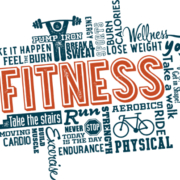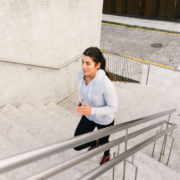Why This 7-Minute Workout Is So Beneficial
Doctors are always telling us to exercise, exercise, exercise but they don’t really give us many realistic options. Going to the gym is a pain, especially if you are short on time. Exercising at home can be a real pain too. You might be limited for space or tripping over kids – and although no one really talks about it, do you really want your significant other watching you sweat and gasp for air as you struggle through one of those insane workout DVDs? They say walking is good, but if you are in a neighborhood that doesn’t have sidewalks or it is hot as blue blazes outside just how likely are you to get up and do it (not to mention safety can be an issue)? Now suppose you could get all your exercising done in a 7-minute span. Would you do it? Is it even possible?
The answer is most definitely!
7 minutes 12 moves
An article published in the Health & Fitness Journal for the American College of Sports Medicine (ACSM) takes everything we’ve learned about exercise and turns it upside down. Just 12 exercises in 7 minutes is all it takes to get fit, according to these fitness experts.
Nowhere are there heavy weights or fancy equipment, just a wall, a chair, and the person’s own body weight. Say hello to high intensity interval training- it’s about to change your world!
This 7-minute workout is the equivalent of a serious weight training session and long run, but without the weights or the running. That isn’t to say it is easy though. It requires a great deal of effort.
There’s a lot packed into those 7 minutes. It provides many of the benefits that are achieved by disciplined, long term endurance training, it just skips over the long-term part.
Make no mistake though, short does not mean it is easy – or pleasant. In fact, it may be one of the longer 7 minutes of your life.
The good news is, it’s over in 7 minutes. That’s a little more than 5 but less than 10.
It’s worth it though, when you look at the numerous health benefits that exercise provides. Plus, it’s great for people who are super busy and can’t seem to squeeze a workout into their schedules. Say hello to no more excuses!
The Science Behind the 7
These 12 exercises were not chosen at random. The reason it works is actually rooted in some pretty deep science. When you exercise for even a few minutes and are working at or near your maximum capacity (that means you are working very hard), it causes your muscles to experience molecular changes that are much like those that occur after several hours of riding a bike or running.
Interval training takes it a step farther. You engage in an activity that is extremely intense, then you have a brief recovery period, then back to a high intensity activity. That is the basis of this workout.
Each exercise should be done for about 30 seconds with a 10 second recovery period – but there’s a twist that ups the effectiveness even more. The exercises are arranged so that they engage the large muscles in the upper body, then in the lower body.
This alternating focus on muscle groups is important because while the lower body is working like crazy, the upper body can be catching its breath, so to speak. This makes for a much more efficient workout but it is also why the order of the exercises is critical.
The exercises are intense, but are movements that just about anyone can do. Many can also be adapted for people at different fitness levels. If you are looking for a great workout that will work for you but won’t eat up a lot of your time, you just might have found it.



